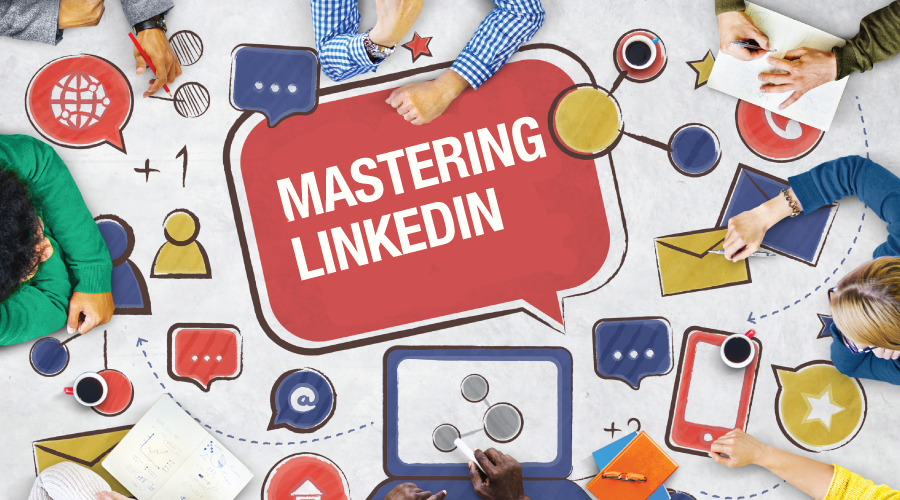Top 10 Tips to Optimize Your LinkedIn Profile
Make the most of your professional headline.
The most important part of your LinkedIn Profile is the section directly below your name. Get the most out of this space by writing a compelling and concise professional headline sharing who you are and what you do. This is a recruiter’s first indicator if you’re a potential fit for a position. Example: Contact Center Representative in Seattle area.
Make your profile 100% complete.
A complete profile improves your LinkedIn search ability. Make sure to include the following critical information:
Accomplishments: Don’t be shy about your accomplishments. If you’ve received awards or other recognition, include this in your profile under the Awards section.
Contact Information: Be sure to include your email address within this section. Most recruiters will contact you via email.
History: Add all relevant positions you’ve held throughout your career, highlighting your contributions and accomplishments (avoid just a laundry list of duties), along with your educational background. Also be sure to upload a current resume. Don’t forget to include any professional organizations or volunteer work that you may be involved with.
Skills: When listing skills, include keywords that would increase your chance of being found by a recruiter. Examples: Customer service skills, data management, outbound sales, etc.
Summary: Fill out the summary to include key highlights of your professional self. Include hard skills (i.e., Excel proficiency), soft skills (i.e., communication strengths) and any examples that show the impact you had on the organizations you’ve worked for
Don’t forget personal branding! Since your LinkedIn profile is your only online representation, take time to make your best impression and draw attention to what sets you apart from others.
Build your network.
The more connections you establish, the more likely your name shows up to those key decision makers as someone they should be in touch with. Ideally, you want your number of connections as close to 500 as possible, but make sure you are getting quality connections. That means connecting with your “Real World” network, or those people you’ve worked with closely, know your work ethic or can vouch for your soft skills.
Get recommended.
Recommendations are invaluable to enhance and add credibility to your profile. To get recommendations, you’ll most likely have to recommend someone first. When selecting the recommenders, it’s ideal to ask individuals with solid knowledge about you professionally and personally, so they can provide a relevant, insightful recommendation.
Connect with companies.
By following companies you’re interested in, you’ll be able to see updates on open positions, as well as view who works within that company. This gives you the opportunity to connect with key decision makers.
Connect with professional groups.
LinkedIn Groups are one of the best ways to make connections and find actual jobs. Join groups in your niche, as well as groups that are specific to careers and job searching.
Be active.
The more effort you put into your LinkedIn presence, the more you’ll get out of the social site. Whether you’re adding connections or providing updates, you’ll increase your chances of showing up on network pages.
Add a photo.
Upload a photo that presents you professionally. This helps add to your social media credibility.
Share status updates.
Whether it’s a link to a business article or a bit of your own wisdom, your thoughts should be shared on your LinkedIn profile. Any updates should place you in a respectable light, so keep them professional. An update rule of thumb is to share a posting up to three times a week.
Establish your own URL.
Set up your own URL on LinkedIn to make it easy for recruiters to find your profile. You can accomplish this by going to the settings tab within your profile. You can add this URL to your resume as well. An example of a custom URL is http://www.LinkedIn.com/in/johnsmith./li>
Why is a LinkedIn profile important?
LinkedIn has gained major traction over the last few years within the social media industry, becoming the world’s largest professional network with over 120 million members in over 200 countries and territories. Because of this. LinkedIn has changed the landscape for recruiters and job seekers forever. Now over 80% of companies use social media for recruitment, with 95% of those organization using LinkedIn.
Still not convinced that you have to create a LinkedIn profile? Hopefully the following will help you out.
LinkedIn standardizes job search information to make it easy for recruiters to find your profile. Users with complete profiles are 40 times more likely to receive opportunities through LinkedIn.
LinkedIn creates your first online impression with a potential employer
Have you ever Googled your name? Hiring managers and recruiters usually do. By joining LinkedIn, your LinkedIn profile will show up as one of the first search links, guaranteeing accurate (and professional) information.
With over 900,000 LinkedIn groups, you can participate in discussions covering a range of topics, peruse job boards and get regular news updates.
If you relocate or change phone numbers, you can frequently update LinkedIn to ensure that you are always aware of any potential job opportunities.

